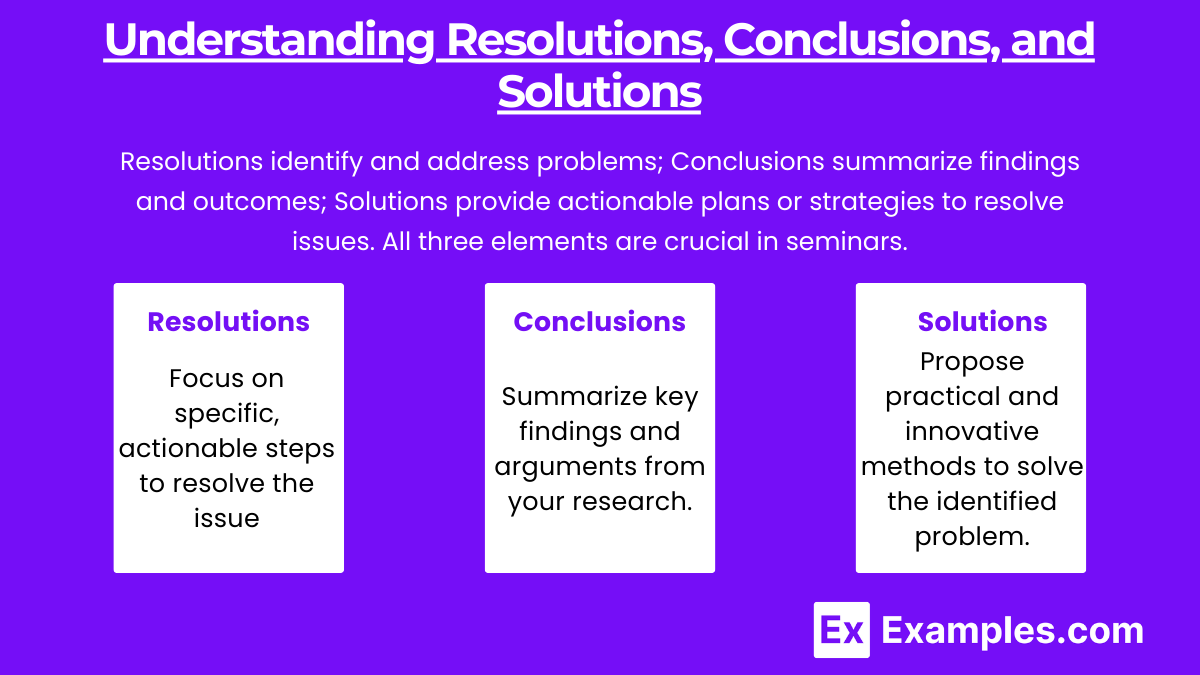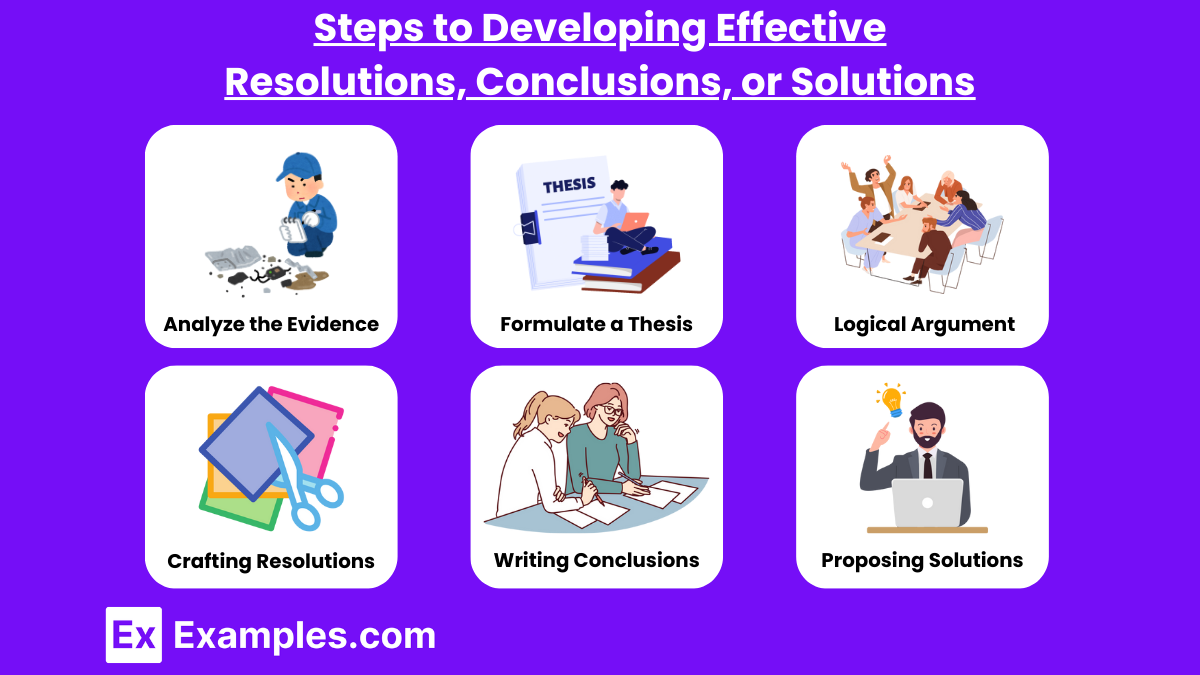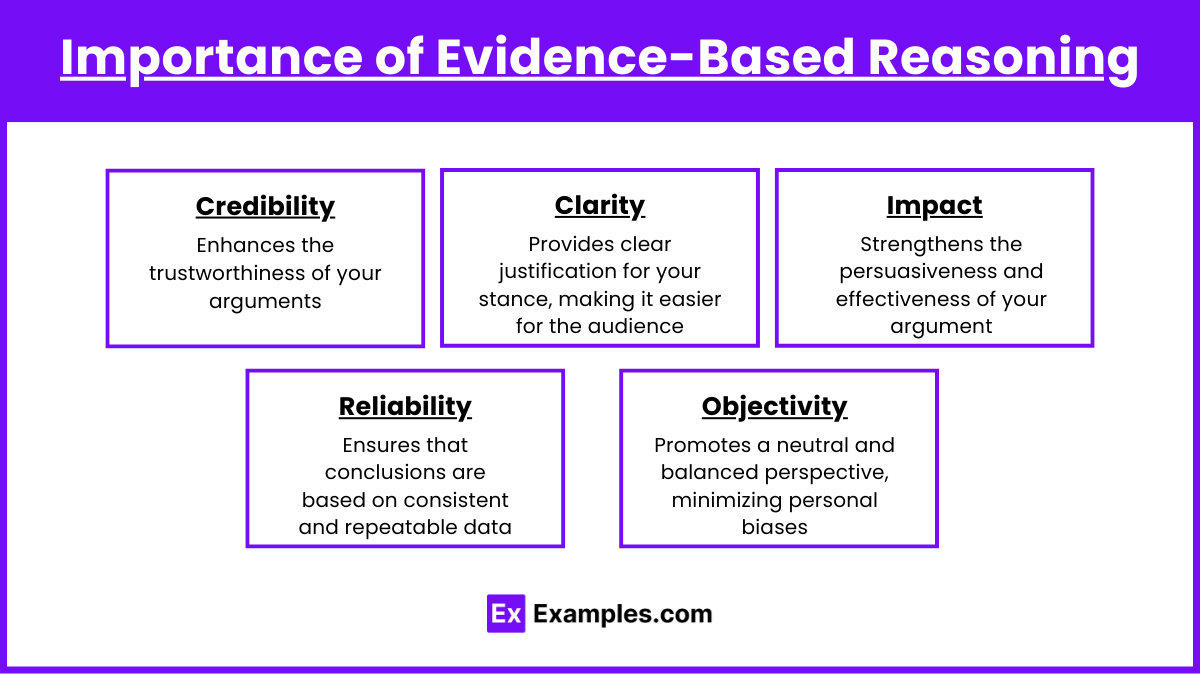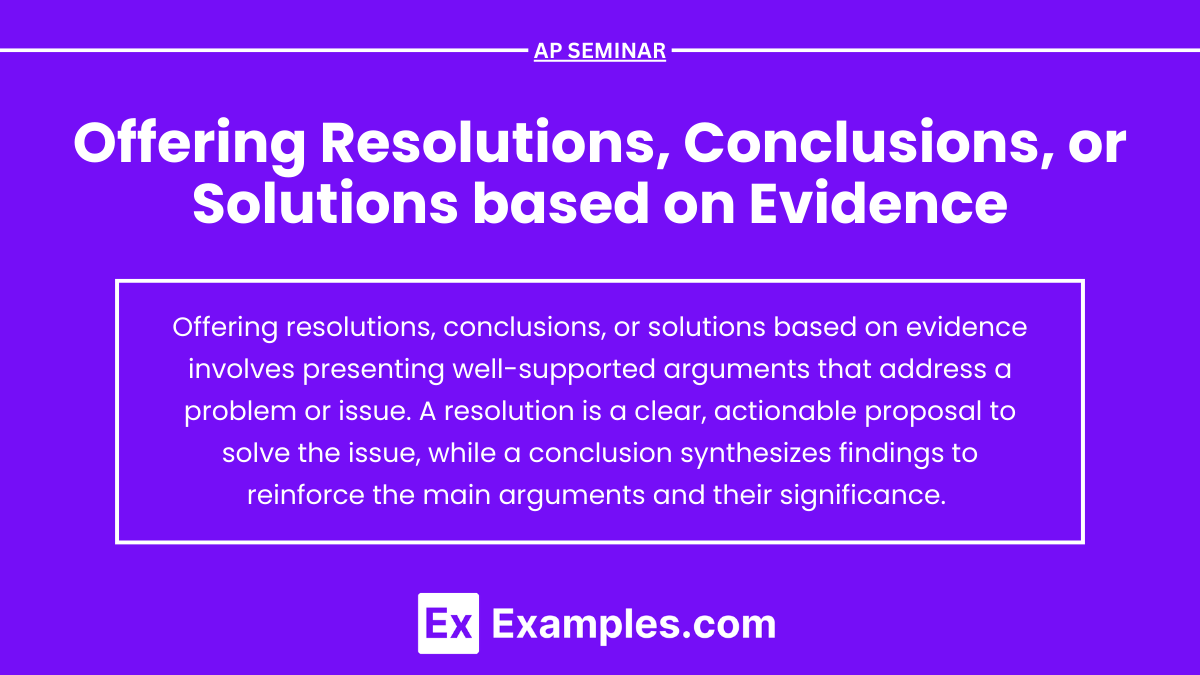Offering resolutions, conclusions, or solutions based on evidence involves presenting well-supported arguments that address a problem or issue. A resolution is a clear, actionable proposal to solve the issue, while a conclusion synthesizes findings to reinforce the main arguments and their significance. Solutions are innovative methods proposed to tackle the problem, detailing implementation and potential outcomes. This approach ensures credibility, clarity, and impact by relying on reliable, relevant evidence to justify the proposed actions, summarizing key points, and highlighting broader implications. Effective resolutions, conclusions, and solutions demonstrate strong analytical and critical thinking skills, crucial for academic and real-world problem-solving.
Learning Objectives
When studying "Offering Resolutions, Conclusions, or Solutions based on Evidence" for the AP Seminar exam, you should aim to learn how to critically analyze and synthesize evidence from multiple sources, construct logical and coherent arguments, and develop well-supported resolutions, conclusions, and solutions. Focus on evaluating the reliability and relevance of evidence, formulating clear and actionable theses, and effectively communicating your findings. Additionally, understand the importance of considering various perspectives and potential implications of your proposed solutions.
Understanding Resolutions, Conclusions, and Solutions

Resolutions identify and address problems; Conclusions summarize findings and outcomes; Solutions provide actionable plans or strategies to resolve issues. All three elements are crucial in seminars.
1. Resolutions:
Clearly state the intended course of action or stance.
Focus on specific, actionable steps to resolve the issue.
Should be realistic and achievable within given constraints.
Can include policy recommendations, changes in practices, or advocacy positions.
2. Conclusions:
Summarize key findings and arguments from your research.
Highlight the significance and implications of the findings.
Restate the thesis in light of the evidence presented.
Provide a final perspective on the topic, linking to broader contexts or future research.
3. Solutions:
Propose practical and innovative methods to solve the identified problem.
Detail the steps required for implementation, including resources and timeframes.
Consider and address potential challenges or counterarguments.
Compare with alternative solutions and justify the proposed approach.
Assess the potential impacts, both positive and negative, on stakeholders.
Steps to Developing Effective Resolutions, Conclusions, or Solutions

1. Analyze the Evidence
Gather Relevant Data: Collect data from credible sources, ensuring a balanced perspective.
Evaluate the Evidence: Assess the reliability, validity, and relevance of the evidence.
Identify Patterns and Trends: Look for recurring themes or significant findings that can inform your resolution, conclusion, or solution.
2. Formulate a Clear Thesis
Establish Your Position: Clearly state your stance on the issue based on the evidence.
Be Specific and Direct: Avoid vague language and ensure your thesis is focused.
3. Develop a Logical Argument
Use Sound Reasoning: Ensure your argument follows a logical progression from premise to conclusion.
Support with Evidence: Back up each point with strong evidence from your research.
4. Crafting Resolutions
Be Actionable: Resolutions should propose clear actions or changes.
Ensure Feasibility: Make sure your resolution is realistic and achievable.
Justify with Evidence: Provide strong justification for why this resolution is the best course of action.
5. Writing Conclusions
Summarize Key Points: Recap the main arguments and evidence presented in your paper.
Highlight Significance: Emphasize the importance of your findings and their implications.
Connect to Broader Context: Show how your conclusions relate to larger issues or future research.
6. Proposing Solutions
Be Innovative: Offer creative, original solutions that address the root of the problem.
Detail Implementation: Explain how your solution can be put into practice.
Consider Implications: Discuss potential outcomes, both positive and negative, of implementing your solution.
Evaluate Alternatives: Compare your solution to other possible approaches and justify why yours is preferable.
Importance of Evidence-Based Reasoning

Credibility: Enhances the trustworthiness of your arguments by grounding them in verifiable facts and reliable data.
Clarity: Provides clear justification for your stance, making it easier for the audience to understand your reasoning.
Impact: Strengthens the persuasiveness and effectiveness of your argument, leading to a greater likelihood of influencing your audience.
Reliability: Ensures that conclusions are based on consistent and repeatable data, enhancing the dependability of your findings.
Objectivity: Promotes a neutral and balanced perspective, minimizing personal biases and focusing on factual information.


